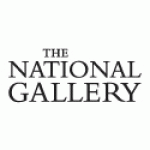How you can use this image
This image can be used for non-commercial research or private study purposes, and other UK exceptions to copyright permitted to users based in the United Kingdom under the Copyright, Designs and Patents Act 1988, as amended and revised. Any other type of use will need to be cleared with the rights holder(s).
Review the copyright credit lines that are located underneath the image, as these indicate who manages the copyright (©) within the artwork, and the photographic rights within the image.
The collection that owns the artwork may have more information on their own website about permitted uses and image licensing options.
Review our guidance pages which explain how you can reuse images, how to credit an image and how to find images in the public domain or with a Creative Commons licence available.
Buy a print or image licence
You can purchase this reproduction
If you have any products in your basket we recommend that you complete your purchase from Art UK before you leave our site to avoid losing your purchases.
Notes
Add or edit a note on this artwork that only you can see. You can find notes again by going to the ‘Notes’ section of your account.
The Virgin, face partly obscured by her vast blue cloak, places a hand on her son’s bloody wound. He is shown upright, after his crucifixion. The image of Christ displaying his wounds after death was popular in the late Middle Ages as a focus for meditation upon his suffering. The spear used to pierce his side is painted on the back of the panel, along with other tools of the Crucifixion, including a hammer and nails. The panel was originally the left half of a pair of images hinged together, or possibly part of a triptych (an object made up of three panels). The other part shows Saint John the Evangelist and Mary Magdalene looking towards Christ in grief (Metropolitan Museum of Art, New York). The artist probably belonged to one of the Florentine painter Giotto’s workshops in Naples.
Title
The Dead Christ and the Virgin
Date
1330s-40s
Medium
Egg tempera on wood
Measurements
H 60 x W 42.3 cm
Accession number
NG3895
Acquisition method
Presented by Henry Wagner, 1924
Work type
Painting
The National Gallery, London
Trafalgar Square, London, Greater London WC2N 5DN England
Stories
-
 'Our true Mother' – interpreting a genderqueer Jesus
'Our true Mother' – interpreting a genderqueer JesusEmma Cieslik
-
 Colour in art: a brief history of blue pigment
Colour in art: a brief history of blue pigmentLydia Figes

